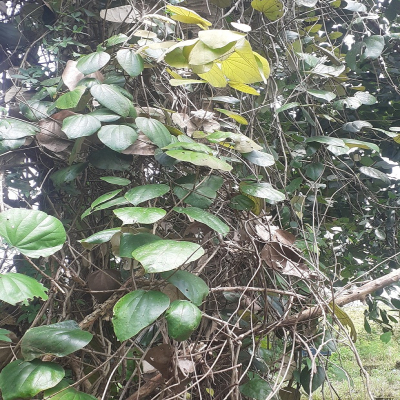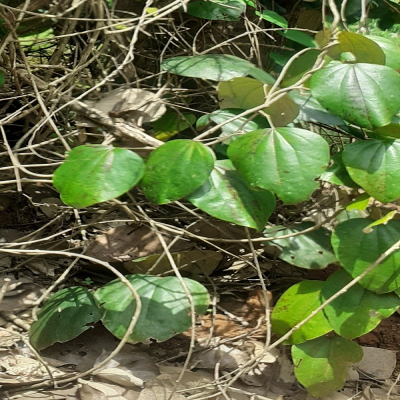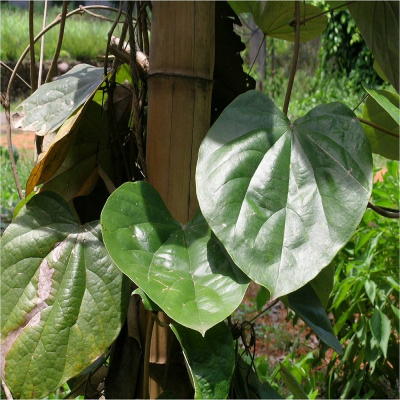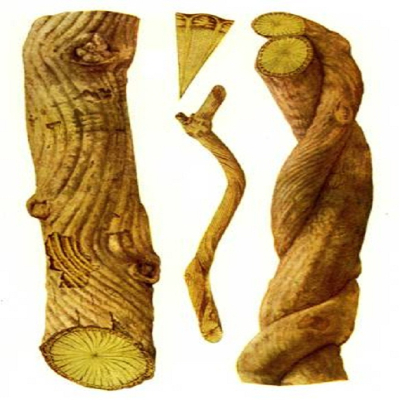Coscinium fenestratum (Gaertn.) Colebr.
Synonyms : C. wallichianum Miers , C. wightianum Miers , Menispermum fenestratum Gaertn.
Family : Menispermaceae
Parts Used : Root , Stem , Wood tincture
Vernacular Names :-
| English | : | Tree turmeric |
| Malayalam | : | Mara manjal |
| Hindi | : | Jhar-i-haldi |
| Sanskrit | : | Daruharida |
| Bengali | : | Haldi gach |
| Kannada | : | Maramanjali |
| Tamil | : | Maramancal |
| Telungu | : | Manu-passupa |
Distribution and habitat: Throughout Peninsular India, Sri Lanka, Cambodia, West Malaysia, Westen Ghats, in Tamilnadu and Kerala (Malappuram, Trichur, Pathanamthitta, Trivandrum districts).
Botany: A woody climbing shrub with thick ligneous and cylindrical stem, externally yellowish brown and internally yellow and longitudinally fluted and with branches.
- Leaves: Simple, alternate, oblong-deltoid, petioled, cordate, entire, 5-7 nerved, smooth and shining above, minutely tomentose beneath, very hoary below, acuminate or obtuse. Petioles downy, shorter than the leaves, 5-15 cm long, brownish tomentose first, often swollen at both ends, geniculate at base.
- Flowers: Yellow or greenish, unisexual in small globular heads, finely tomentose, numerous, sub sessile, villous, of an obscure green, divaricately branched inflorescence.
- Fruit: Berries round, villous, size of a large filbert. Single seeded, whitish or green, sub globose, longitudinally ridged. Ripened during September - November.
Properties: Thermogenic, anodyne, ophthalmic, anti-inflammatory, antiseptic
Chemical constituents: Stem and roots contain berberin, jatrorrhizine and palmatine, saponins and some resinous materials.
Uses: Diabetes, jaundice, ulcer ophthalmopathy, inflammations, wounds, ulcers, skin diseases, abdominal disorders, fever and general debility to arrest excessive bleeding wounds, debility, fever and dyspepsia. The wood decoction is used as a remedy to prevent tetanus. The root is used for dressing wounds and ulcers.
Propagation: Seed, Stem cutting





